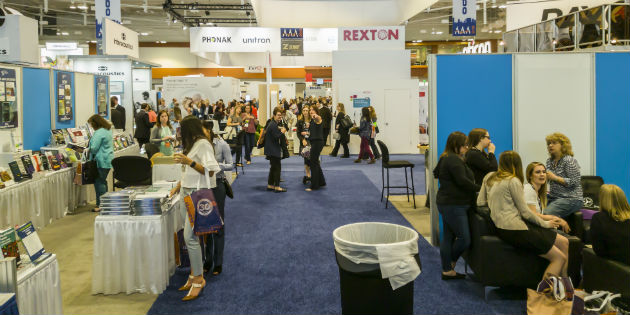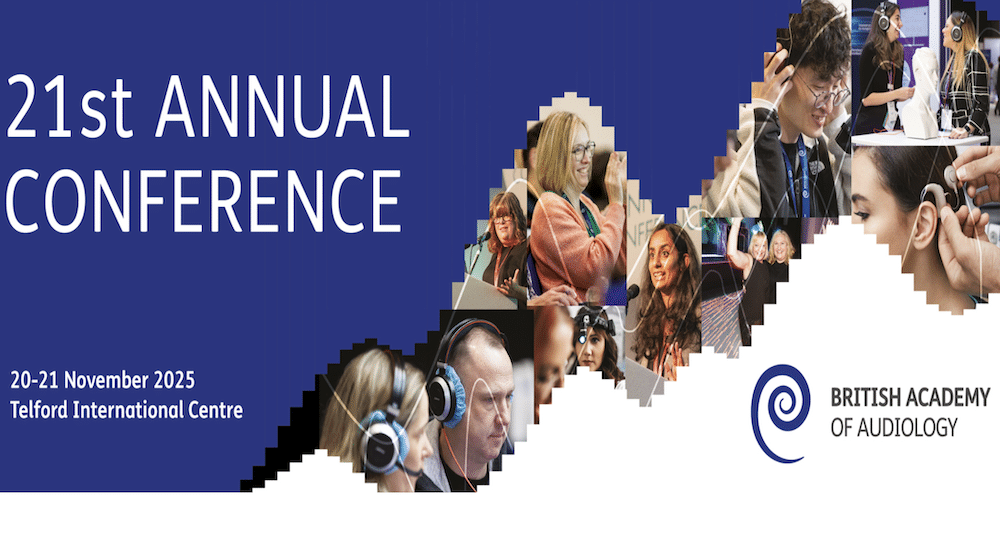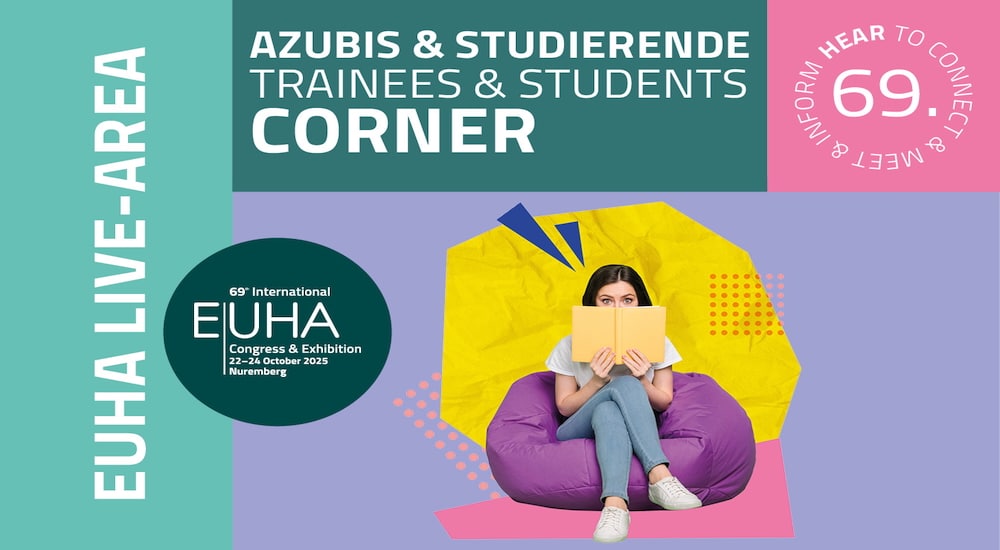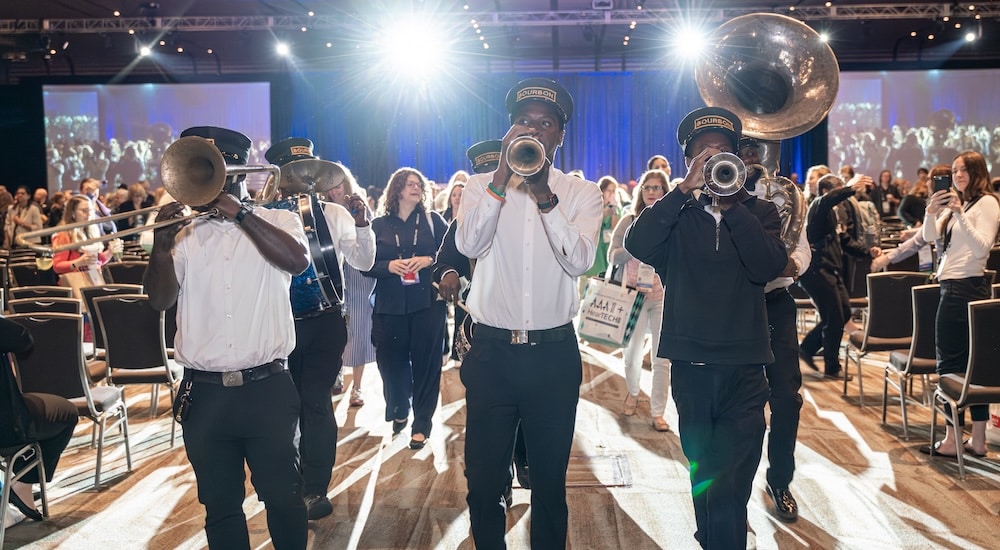Innovations at the AAA exhibition hall
AAA18
An overview of some of the manufacturer’s presentations at the exhibition hall.

Oticon
Next to leading three educational sessions at the AAA, Oticon takes a prominent space at the booth floor. We see dancing robots, information booths and demonstrations. On display is the extended Oticon Opn™ family that now includes ConnectClip, introduced in January 2018, the newest addition to the range of Oticon connectivity devices. Don Schum, Vice President of Audiology for Oticon, Inc.: “Our main messaging here at AAA is about the proven benefits that Oticon Opn, with more than 1 million sold, is bringing to patients. We introduced Opn in 2016. Since then we’ve expanded the product line and are collecting clinical evidence of Opn’s success. Here at AAA, we’re previewing the results of two studies – using similar methodology but different populations – collected with our research partners. The studies indicate that with Opn hearing aids, we are closing another gap to normal hearing.”

The studies, presented in posters and presentations at the Oticon booth, show that Opn hearing aids with OpenSound Navigator™ reduce listening effort significantly, making communication less exhausting and moving the ‘giving up’ point for when a person with hearing loss starts to give up, enabling them to participate actively in more social situations. “This latest research is part of Oticon’s ongoing BrainHearing™ research to help understand and aid the crucial role that the brain plays in hearing”, Schum adds.
The other major message from Oticon at AAA is about new technologies, Schum continues. Like Oticon RemoteCare™, an e-health service that allows hearing care professionals to conduct follow-up appointments with patients online, that is schedule for pilot testing later this year. “What the patient will see is the face of the hearing aid practitioner in real-time. The professional on his end will have the fitting software opened, with direct control of the settings,” the Vice President explains.
Schum also discusses the new HearingFitness™ App that Oticon previewed at the CES convention in January. Oticon has won a CES 2018 Innovation Award for the app, that is used in conjunction with Opn hearing aids to track hearing aid use, listening environments and other behavior, gathering and collating data with measurements of heart rate, sleep patterns and other health markers from different wearable devices. By providing information about actual use and relevant user feedback, the app can provide feedback to help people optimize use of their hearing aids and take charge of their long-term hearing health. Untreated hearing loss has been linked to an increased risk of cognitive decline, Schum explains. “With the HearingFitness App, we are reinforcing and reminding users of how important their hearing is. The goal is to give patients feedback on their hearing health – which is an important health factor that they can control.”
Widex
You can’t go around Widex’ presentation at this year’s AAA. A cinema box emerges in between all of the stands, including a red carpet and popcorn machine. What is Widex presenting here?
The big star of Widex’ show is the EVOKE. According to the company the first hearing aid to give users the ability to employ real-time machine learning, featuring intuitive new controls that guide users to their desired hearing experience. Using SoundSense Technology, users choose between sound suggestions provided by the EVOKE app on their smartphone. The processor then uses the data to deliver sound, based on the user’s personal preferences, in real time. James Martin, Director of Audiological Communication Widex USA: “People have their own preferences, they want things in their own way. How do we meet our patients in the real world, where they are, with technology?” Solutions for patients that come out of a lab or clinic are based on assumptions, Martin also states. “But what happens if the assumptions aren’t right? What if people can’t articulate their preferences well?” And even if they do, their stories might not represent the exact situation. The company of Widex is working on solutions using information outside the lab: “Widex is really focusing on the ecology of hearing”, says Martin, “on the struggles out there that we can’t replicate in a clinic.”

According to Martin, Widex’ machine learning is giving patients the opportunity to focus on their environment. “With EVOKE, it’s moving in that direction. The demands that our patients have in their lives are all unique. We want to continue to learn as they do.” EVOKE also offers a technology that allows the patient to be present, according to James Martin: “Motivation and intent can change from moment to moment. That moment that you are in, is gone afterwards. And you want to be able to hear in that moment, fully engaged.” EVOKE will become available in most markets between April and June 2018.
What other technologies are coming up from Widex? “We want to offer users a solution to watch TV and stream it to their device, to capture sounds clearly”, Martin answers. Widex will introduce a new direct TV solution by the end of the summer. And in fall, Widex will present the world’s first fuel cell hearing aid in the industry. “The cell will allow us some unique things in the industry”, says Martin. “It allows us to charge a hearing aid in less than 20 seconds. That will give it the ability to run for approximately 24 hours.”
Rexton
Carlos Abreu, Manager of Audiology, presents Rexton’s MyCore 8C portfolio at the AAA, with connective devices Emerald S and Emerald M, and BTE Mosaic M, all offering possibilities for direct streaming. “Our other big feature is My Voice”, says Abreu, which is launched at the congress. A feature that identifies each user’s own voice and specifically processes it to distinguish it from other speakers, as well as natural sounds. “It improves the hearing aids patients’ occlusion perception. And it does this automatically, without touching the device”, Abreu mentions, who also offers short demonstration classes about this feature at the booth.

Sonova
Sonova Holding AG also presents its latest innovations at the AAA. Unitron, Phonak and Hansaton are all having their corner in the big, centrally located Sonova stand.
Unitron
Aaron Jones, Director of In-clinic Success at Unitron: “We’re showing our entire line here, but are focussing on Moxi All and Flex. Moxi All is what we’re mostly excited about; the first handsfree Bluetooth device. Simply press a button and make a call. It’s the only one that’s rechargeable and made for all devices. And we haven’t sacrificed on performance.” After powering up overnight, a rechargeable battery keeps the hearing aid running for up to 16 hours. But Moxi All still offers users the possibility to use traditional hearing batteries as well. The hearing aid is available from March 2018.

“And Flex is the connected network designed to improve the patients experience”, Jones continues. “The datalogging in a hearing aid tracks how the hearing aid is set and we also track the acoustic environments that they’re in.” These are objective data, but Flex also uses subjective data, when patients share real-time feedback with their hearing aid professional. Flex was launched 5 years ago, and has matured over the years. “So once patients commit to a certain type of technology, they can still update. They don’t need to change the device.” Unitron is currently rolling out Flex formula, a step by step guide for professionals to work more efficiently.
Phonak
Phonak completes its latest generation Belong platform with the introduction of the Naída B power (launched in February) and Sky B for children. For the first time Naída also comes in a rechargeable Receiver-in-Canal (RIC) option. The new pediatric portfolio of Sky B features operating system AutoSense Sky OS, built specifically for children, and SoundRecover, which gives them access to a broader range of sounds that are helpful for speech and language development. There’s now a rechargeable option available, Phonak Sky B-PR. Another rechargeable solution is the CROS B-R, launched during the AAA, in which Phonak makes use of Contralateral Routing of Signal (CROS) technology in this device for single-sided deafness.
Phonak also presents Roger MultiBeam Technology (MBT) at its booth, that uses three microphones to form six directional beams within 360 degrees. When a Roger microphone with MBT is placed on a table, it automatically selects the speaker. The Roger Select and Roger Table Mic II are the first products to use this technology. Christine Jones, Vice President of Audiology at Phonak U.S.: “Audéo B-R is another product that we are showcasing here. It is now rechargeable, with lithium-ion technology. It offers all day streaming and there’s also a power pack with seven additional recharges. This has been the big unveiling; not having to worry about batteries is a real life changer.”

Christine Jones further mentions the new fitting formula, Adaptive Phonak Digital (APD) Contrast, which provides slow compression. “We rarely launch that”, Jones says. “But we recognised the need to reformulate. And we’ve had amazing response, it really addresses the problem of the loss of fidelity.”
Hansaton
Hansaton, taking the smallest piece of the booth pie, is introducing sound SHD stream, available from June, focussing on direct connectivity and binaural features. Hansaton is additionally presenting its latest RIC hearing system (launched in March) in the sound SHD product family, which offers binaural features and connects directly to Bluetooth through 2.4 GHz wireless technology.

Microson
Barcelona-based Microson is also present at the AAA. At the stand they present the Free ITC and My Sound Amplifier. Free ITC is an intracanal hearing aid that allows for open adjustment. Its 8 independent channels enable the hearing care professional to make precise adjustments. According to Microson it’s the first intracanal aid which can be fitted in Open Fit mode. It has an automatic feedback canceller, while the ‘Acoustic Tap function’ allows for a convenient change of program. Free ITC also has a noise generator for the treatment of tinnitus that equalises noise by frequency to mask the tinnitus.

Signia/Sivantos
Signia has a large number of launches at and around the AAA. Among other innovations, Signia presents Signia Nx at its round-shaped booth. This platform is based on the Ultra HDe2e binaural link. A continuous full-bandwidth audio exchange enables dynamic scanning and processing of the wearer’s own voice independently from all other sounds. Debra Ludgate, Sr. Director Marketing & Public Relations at Signia: “It separates your voice from the environment, so your own voice actually sounds like yourself.” The new Pure Charge&Go Nx, also launched at the congress, combines the features of Signia Nx with wireless rechargeability. The Li-Ion power cell of Pure Charge&Go Nx supports Bluetooth connectivity, allowing long-lasting audio streaming. “An excellent product for somebody who’s on the go”, according to Ludgate, “as it runs for 19 hours on a single charge”.

Signia’s Telecare 3.0 is another key feature at Signia’s booth, a telehealth application which connects hearing aid wearers with their hearing care professional. It consists of the myHearing app for Apple and Android for consumers, and a web-based portal that professionals use to stay in contact with their patients. Now with TeleCare 3.0, remote fine tuning can be also done directly from the Connexx fitting software. Debra Ludgate: “The hearing care professional can now adjust the hearing aids remotely, which is ideal for patients who can’t make it to the office. The myHearing app enables patients to get accustomed to their hearing aids and rate their experience, so the professional can address any issues early on. The app also has a library of videos to enable the patient to learn more about their hearing aids and how to take care of them.”
Another presented product is the new StreamLine Mic, which makes Signia Nx devices into a hands-free mobile headset that streams from any Bluetooth device. And also Signia’s Silk, Insio and Motion line are now on the Nx platform, available from May 2018. For the rest of the year, Signia will continue to expand products on the Nx line.
Read more on this conference here.
Photos: Femke Noordink


